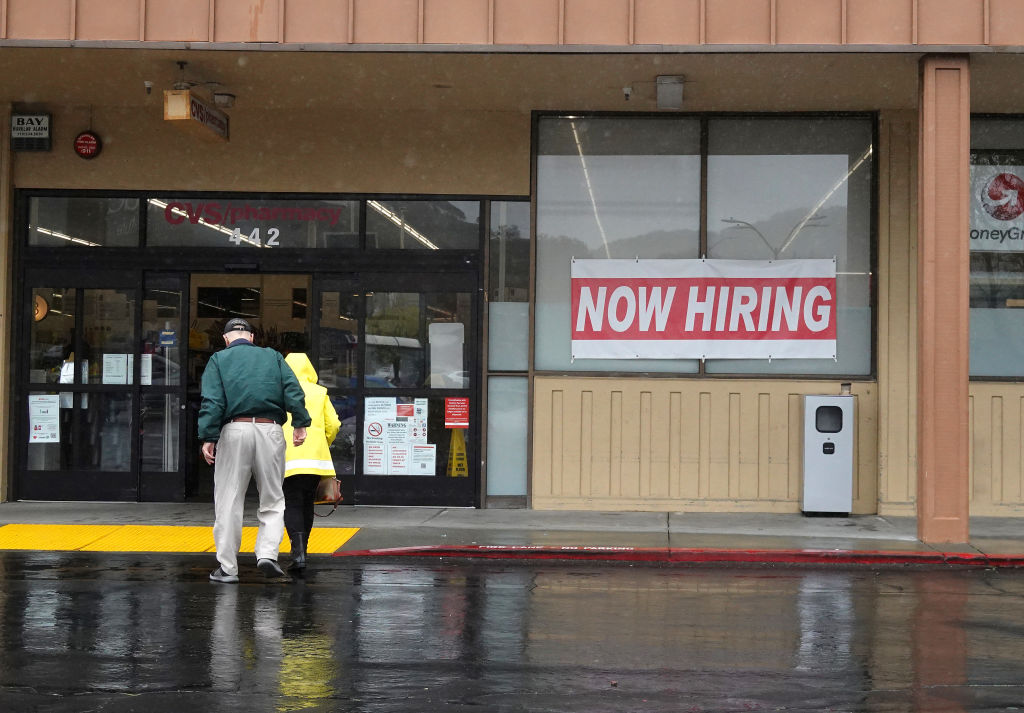President Joe Biden is on a Bidenomics tour, selling his economic doctrine to the nation. But after the latest jobs data, it appears that Biden should have been touting his marketing campaign earlier in the year when the US labor market was hotter than it is now. This had been the one area that has excelled under the current administration, but new figures suggest that it could be coming back down to earth.
Jobs in the World of Bidenomics
Biden just had the worst jobs report of his presidency. According to the Bureau of Labor Statistics (BLS), the US economy created 209,000 new jobs in June, down from the downwardly revised 306,000 (more of this later) in May. This was below the market consensus of 225,000. The unemployment rate dipped to 3.6% last month, down from 3.7% in May, and matched economists’ expectations. Average hourly earnings were unchanged year-over-year and month-over-month at 4.4% and 0.4%, respectively. The labor force participation rate was flat at 62.6%, average weekly hours edged up to 34.4, and the U-6 unemployment rate – people who want to work but have given up or are working part-time because they cannot find full-time jobs – shot up to 6.9%.
Employment gains were led by government (60,000), health care (41,000), social assistance (24,000), and construction (23,000), BLS data highlighted. The retail sector shed 11,000 employees, and transportation and warehousing lost 7,000 positions. Job growth has averaged 278,000 per month in the first half of 2023. By comparison, the US labor market averaged 399,000 in the first six months of 2022. Meanwhile, the BLS reported that non-farm payroll employment levels were revised down for April and May by 77,000 and 33,000, respectively.
 This was a head-scratching report for a few reasons. First, the ADP Research Institute’s National Employment Report showed that private businesses added 497,000 new jobs. Second, it is still being determined if this would encourage or discourage the Federal Reserve to raise interest rates at this month’s Federal Open Market Committee (FOMC) policy meeting. Third, the latest jobs numbers come as the White House has been shouting to the heavens about Bidenomics.
This was a head-scratching report for a few reasons. First, the ADP Research Institute’s National Employment Report showed that private businesses added 497,000 new jobs. Second, it is still being determined if this would encourage or discourage the Federal Reserve to raise interest rates at this month’s Federal Open Market Committee (FOMC) policy meeting. Third, the latest jobs numbers come as the White House has been shouting to the heavens about Bidenomics.
Ultimately, is this a one-off non-farm payroll report, or is the red-hot labor market beginning to be doused by the rising-rate climate?
Interested in Interest Payments?
Here is a subject that will hardly be discussed in the 2024 presidential election: interest payments on the national debt. This is not exactly an issue on the top of voters’ minds as they struggle to make ends meet, but it is a topic that will have lasting consequences for future generations. The Congressional Budget Office estimates it will cost about $600 billion to service the debt in the current fiscal year. By fiscal year 2033, this figure will skyrocket to $1.4 trillion. By 2053, it will exceed $5 trillion. As the years go by, spending on interest will surpass all other programs: defense, Medicare, Medicaid, and Social Security. Ouch.
“By the end of the next three decades, interest will consume 6.7 percent of GDP and 35 percent of federal revenues annually,” the Committee for a Responsible Federal Budget wrote in a new report. “High and rising national debt will mean that more of the budget will go towards servicing that debt with interest payments instead of going towards other priorities. Importantly, a high interest burden also makes it more difficult for lawmakers to borrow more in times of emergency or during a war without significant consequences. Policymakers should work together to address these fiscal challenges before they become even more difficult to confront.

(Photo by Justin Sullivan/Getty Images)
Net interest payments will exhaust government coffers, refrain from adding any value to the economy, and require more borrowing, taxing, and printing to keep up with Uncle Sam’s obligations.
Banks Closing Their Vaults
Since the banking turmoil this past spring, financial institutions are keeping the vaults closed despite routinely tapping into the Federal Reserve’s emergency lending facilities. Put simply, they are not lending like they used to, and this could have ramifications for an economic landscape accustomed to credit. New Eccles Building data show that commercial and industrial loans tumbled by $7.9 billion to $2.75 trillion for the week ending June 28, while total bank deposits declined by nearly $1 billion to $17.34 trillion. While these numbers are not wreaking havoc just yet, there is a growing consensus among economists and market analysts that the effects of the paucity of lending will be seen later this year.



